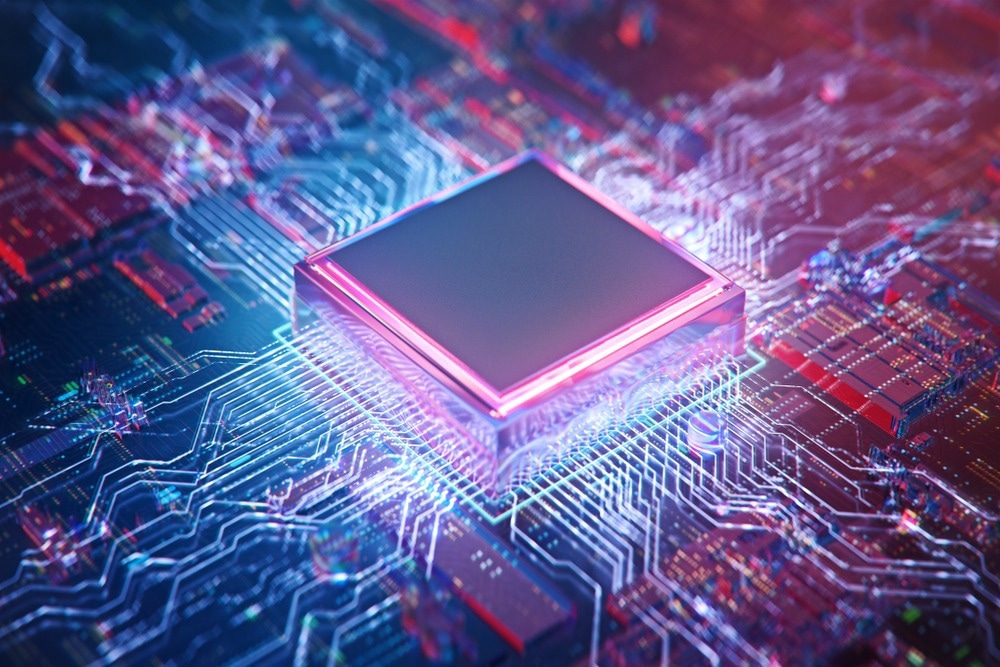The semiconductors industry is expected to be revolutionized by two-dimensional materials. Still, while multiple studies have noted prototype devices comprising hopeful properties for driving and sensing electrical current, their readiness level of technology is still very minimal as they mostly employ processing and synthesis methods that are incompatible with industry, develop huge devices on unfunctional substrates, and exhibit poor yield and variability.

Image Credit: Connect world/Shutterstock.com
A team of researchers at King Abdullah University of Science and Technology (KAUST) headed by Dr. Mario Lanza, Associate Professor of Materials Science and Engineering, has efficiently combined two-dimensional materials on silicon microchips, and attained outstanding electronic performance, integration density, and yield. The research has been made available in Nature.
In the future, most microchips will exploit some of the many outstanding electronic and thermal properties of these materials.
Dr. Mario Lanza, Associate Professor, Materials Science and Engineering, King Abdullah University of Science and Technology
Specifically, Lanza’s group employed a two-dimensional insulating material known as multilayer hexagonal boron nitride (about 6 nm thick) and used microchips with silicon transistors of complementary metal-oxide-semiconductor (CMOS) technology—a technology type that exists in all electronic products used, like computers, phones, automobiles, household appliances, and medical machines.
The subsequent hybrid 2D/CMOS microchips show high durability and unique electronic properties, facilitating the fabrication of artificial neural networks with very low power consumption.
They can efficiently compute spiking neural networks—electrical stresses given during very short duration—an important element of current artificial intelligence systems that are growing in demand. Most existing devices are not ideal for implementing this kind of neural network, and there is a market demand to discover new methods.
The study has gained the attention of top semiconductor companies like Taiwan Semiconductor Manufacturing Corporation (TSMC) and Advanced Semiconductor Materials Lithography (ASML) and has aided other companies in decreasing processing energy and cost.
The majority of companies in the field of artificial intelligence and microchip manufacturing are planning to develop new hardware that decreases energy consumption and data processing time but has not found an appropriate device yet.
For radio-frequency applications, IBM has tried to combine graphene into transistors, but the devices could not process or store data. On the contrary, the devices developed by Professor Lanza’s group measure only 260 nm and could be made much tinier effortlessly if more advanced microchips were available.
For the field of semiconductors and nanoelectronics, this work is thrilling because of the high performance of the circuits and devices produced and the possibility for far-reaching industry applications.
Journal Reference:
Zhu, K., et al. (2023). Hybrid 2D/CMOS microchips for memristive applications. Nature. https://doi.org/10.1038/s41586-023-05973-1.